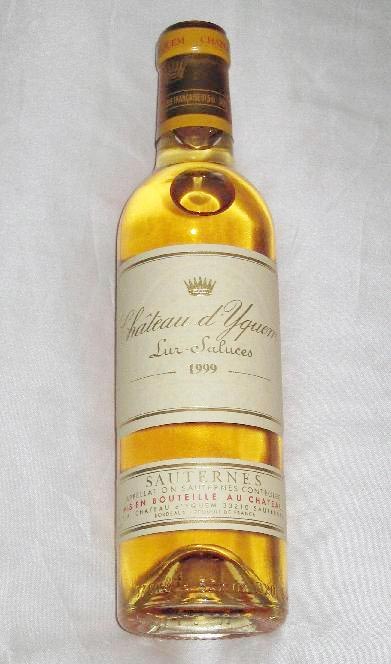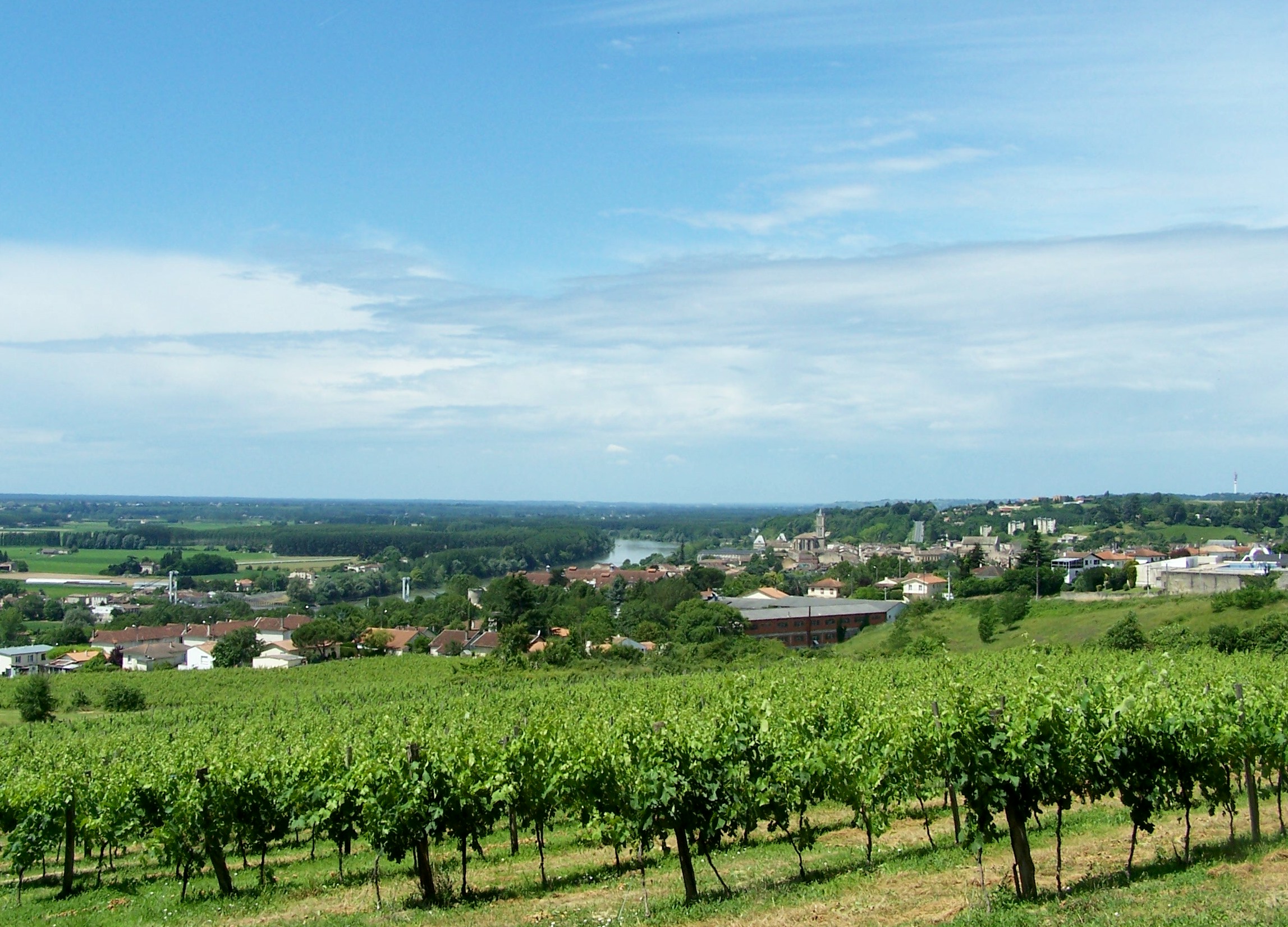|
Sainte-Croix-du-Mont AOC
Sainte-Croix-du-Mont () is an ''Appellation d'origine contrôlée'' (AOC) for sweet white wine from the Bordeaux wine region in France. Geography The wine-growing area is located in the Aquitaine region of France and surrounds the commune of Sainte-Croix-du-Mont in the Gironde department. It is located on the right bank of the Garonne river, in the Entre-Deux-Mers subregion of Bordeaux. Appellation The appellation extends over and the grape varieties grown are Sémillon, Sauvignon and Muscadelle. It has a good geographical location for producing wine affected by noble rot as many of the vineyards grow next to rivers and are therefore likely to be affected by the ''Botrytis cinerea'' fungus in the autumn. The noble rot increases the sugar content, acidity, and glycerol Glycerol (), also called glycerine in British English and glycerin in American English, is a simple triol compound. It is a colorless, odorless, viscous liquid that is sweet-tasting and non-toxic. The glyce ... [...More Info...] [...Related Items...] OR: [Wikipedia] [Google] [Baidu] |
Sémillon
Sémillon is a golden-skinned grape used to make dry and sweet white wines, mostly in France and Australia. Its thin skin and susceptibility to botrytis make it dominate the sweet wine region Sauternes AOC and Barsac AOC. History The Sémillon grape is native to the Bordeaux region. It was known as Sémillon de Saint-Émilion in 1736, while Sémillon also resembles the local pronunciation of the town's name ( emi'ʎuŋ. It first arrived in Australia in the early 19th century and by the 1820s the grape covered over 90% of South Africa's vineyards, where it was known as ''Wyndruif'', meaning "wine grape". It was once considered to be the most planted grape in the world, although this is no longer the case. In the 1950s, Chile's vineyards were made up of over 75% Sémillon. Today, it accounts for just 1% of South African Cape vines. Viticulture Sémillon, which is relatively easy to cultivate, consistently produces six to eight tons of grapes per acre from its vigorous vines.P ... [...More Info...] [...Related Items...] OR: [Wikipedia] [Google] [Baidu] |
Sauternes AOC
Sauternes is a French sweet wine from the region of the same name in the Graves section in Bordeaux. Sauternes wine is made from Sémillon, sauvignon blanc, and muscadelle grapes that have been affected by ''Botrytis cinerea'', also known as noble rot. This causes the grapes to become partially raisined, resulting in concentrated and distinctively flavored wines. Due to its climate, Sauternes is one of the few wine regions where infection with noble rot is a frequent occurrence. Even so, production is a hit-or-miss proposition, with widely varying harvests from vintage to vintage. Wines from Sauternes, especially the ''Premier Cru Supérieur'' estate Château d'Yquem, can be very expensive, largely due to the very high cost of production. Barsac lies within Sauternes and is entitled to use either name. Somewhat similar but less expensive and typically less-distinguished wines are produced in the neighboring regions of Monbazillac, Cérons, Loupiac and Cadillac. In the United St ... [...More Info...] [...Related Items...] OR: [Wikipedia] [Google] [Baidu] |
Glycerol
Glycerol (), also called glycerine in British English and glycerin in American English, is a simple triol compound. It is a colorless, odorless, viscous liquid that is sweet-tasting and non-toxic. The glycerol backbone is found in lipids known as glycerides. Because it has antimicrobial and antiviral properties, it is widely used in wound and burn treatments approved by the U.S. Food and Drug Administration. Conversely, it is also used as a bacterial culture medium. It can be used as an effective marker to measure liver disease. It is also widely used as a sweetener in the food industry and as a humectant in pharmaceutical formulations. Because of its three hydroxyl groups, glycerol is miscible with water and is hygroscopic in nature. Structure Although achiral, glycerol is prochiral with respect to reactions of one of the two primary alcohols. Thus, in substituted derivatives, the stereospecific numbering labels the molecule with a "sn-" prefix before the stem name of the m ... [...More Info...] [...Related Items...] OR: [Wikipedia] [Google] [Baidu] |
Botrytis Cinerea
''Botrytis cinerea'' is a necrotrophic fungus that affects many plant species, although its most notable hosts may be wine grapes. In viticulture, it is commonly known as "botrytis bunch rot"; in horticulture, it is usually called "grey mould" or "gray mold". The fungus gives rise to two different kinds of infections on grapes. The first, grey rot, is the result of consistently wet or humid conditions, and typically results in the loss of the affected bunches. The second, noble rot, occurs when drier conditions follow wetter, and can result in distinctive sweet dessert wines, such as Sauternes (wine), Sauternes or the Aszú of Tokaji/Grasă de Cotnari. The species name ''Botrytis cinerea'' is derived from the Latin for "grapes like ashes"; although poetic, the "grapes" refers to the bunching of the fungal spores on their Conidium, conidiophores, and "ashes" just refers to the greyish colour of the spores ''en masse''. The fungus is usually referred to by its anamorph (asexual form ... [...More Info...] [...Related Items...] OR: [Wikipedia] [Google] [Baidu] |
Noble Rot
Noble rot (french: pourriture noble; german: Edelfäule; it, Muffa nobile; hu, Aszúsodás) is the beneficial form of a grey fungus, ''Botrytis cinerea'', affecting wine grapes. Infestation by ''Botrytis'' requires moist conditions. If the weather stays wet, the damaging form, "grey rot", can destroy crops of grapes. Grapes typically become infected with ''Botrytis'' when they are ripe. If they are then exposed to drier conditions and become partially raisined, this form of infection is known as noble rot. Grapes picked at a certain point during infestation can produce particularly fine and concentrated sweet wine. Wines produced by this method are known as botrytized wines. Origins According to Hungarian legend, the first aszú (a wine using botrytised grapes) was made by Laczkó Máté Szepsi in 1630. However, mention of wine made from botrytised grapes appears before this in the ''Nomenklatura'' of Fabricius Balázs Sziksai, which was completed in 1576. A recently discover ... [...More Info...] [...Related Items...] OR: [Wikipedia] [Google] [Baidu] |
Muscadelle
Muscadelle is a white wine grape variety. It has a simple aroma of grape juice and raisins like grapes of the Muscat family of grapes, but it is unrelated. DNA analysis has indicated that Muscadelle is a cross between Gouais blanc and an unidentified grape variety. Wine regions In France, it is a minor constituent in the dry and sweet wines of Bordeaux, such as Sauternes. It rarely makes up more than 10% of the blend, which is dominated by Sémillon and Sauvignon blanc. Throughout the 1990s and the beginning of the 21st century, plantings of the grape were falling. Some sweet wines from Monbazillac, on the other hand, can have a higher proportion of Muscadelle. In Australia, the grape is used to make a fortified wine, now known as Topaque (formerly Tokay). Those made in the Rutherglen region generally receive considerable aging in hot cellars, leading to a maderised and oxidative character. A few other Australian wine regions, including the Barossa Valley, make similar wine ... [...More Info...] [...Related Items...] OR: [Wikipedia] [Google] [Baidu] |
Sauvignon Blanc
is a green-skinned grape variety that originates from the Bordeaux region of France. The grape most likely gets its name from the French words ''sauvage'' ("wild") and ''blanc'' ("white") due to its early origins as an indigenous grape in South West France. It is possibly a descendant of Savagnin. is planted in many of the world's wine regions, producing a crisp, dry, and refreshing white varietal wine. The grape is also a component of the famous dessert wines from Sauternes and Barsac. Sauvignon blanc is widely cultivated in France, Chile, Romania, Canada, Australia, New Zealand, South Africa, Bulgaria, the states of Oregon, Washington, and California in the US. Some New World Sauvignon blancs, particularly from California, may also be called "Fumé Blanc", a marketing term coined by Robert Mondavi in reference to Pouilly-Fumé. Depending on the climate, the flavor can range from aggressively grassy to sweetly tropical. In cooler climates, the grape has a tendency to pr ... [...More Info...] [...Related Items...] OR: [Wikipedia] [Google] [Baidu] |
Entre-Deux-Mers
Entre-Deux-Mers is a French region, well known as a Bordeaux wine growing region. The geographical area is situated between the rivers Garonne and Dordogne, and is bounded in the east by the border of the Gironde department and in the west by the , the confluence of the Garonne and the Dordogne. At , it is the largest sub-region of Bordeaux, although, as there are large areas of forest, only half the land is used for growing grapes. The total area under vine is about , with about 250 growers making wine there. Name The name of the region is derived, not from the French word "'" ("sea"), but from "'" ("tide"). Thus, it means "between two tides", a reference to its location between two tidal rivers. Wine region and Appellation Although both red and white wine is produced in Entre-Deux-Mers, only the dry white carries the appellation d'origine contrôlée (AOC) "Entre-Deux-Mers". The red is sold as Bordeaux or Bordeaux Supérieur. Many growers switched from the white gr ... [...More Info...] [...Related Items...] OR: [Wikipedia] [Google] [Baidu] |
Appellation D'origine Contrôlée
An appellation is a legally defined and protected geographical indication primarily used to identify where the grapes for a wine were grown, although other types of food often have appellations as well. Restrictions other than geographical boundaries, such as what grapes may be grown, maximum grape yields, alcohol level, and other quality factors may also apply before an appellation name may legally appear on a wine bottle label. The rules that govern appellations are dependent on the country in which the wine was produced. History The tradition of wine appellation is very old. The oldest references are to be found in the Bible, where ''wine of Samaria'', ''wine of Carmel'', ''wine of Jezreel'', or ''wine of Helbon'' are mentioned. This tradition of appellation continued throughout the Antiquity and the Middle Ages, though without any officially sanctioned rules. Historically, the world's first exclusive (protected) vineyard zone was introduced in Chianti, Italy in 1716 and th ... [...More Info...] [...Related Items...] OR: [Wikipedia] [Google] [Baidu] |
Garonne
The Garonne (, also , ; Occitan, Catalan, Basque, and es, Garona, ; la, Garumna or ) is a river of southwest France and northern Spain. It flows from the central Spanish Pyrenees to the Gironde estuary at the French port of Bordeaux – a length of , of which is in Spain (Val d'Aran); The Ratera-Saboredo cirque has been pointed by many researchers as the origin of the Garonne.Faura i Sans (M.); Sobre hidrología subterránea en los Pirineos Centrales de Aragón y Cataluña. Bol. de la Real Soc. de Hist. Nat, vom. XVI, pgs. 353-354. Madrid, 1916. The third thesis holds that the river rises on the slopes of Pic Aneto at above sea level and flows by way of a sinkhole known as the '' Forau de Aigualluts'' () through the limestone of the Tuca Blanca de Pomèro and a resurgence in the Val dera Artiga above the Aran Valley in the Spanish Pyrenees. This underground route was suggested by the geologist Ramond de Carbonnières in 1787, but there was no confirmation until 1931, whe ... [...More Info...] [...Related Items...] OR: [Wikipedia] [Google] [Baidu] |
Gironde
Gironde ( US usually, , ; oc, Gironda, ) is the largest department in the Nouvelle-Aquitaine region of Southwestern France. Named after the Gironde estuary, a major waterway, its prefecture is Bordeaux. In 2019, it had a population of 1,623,749.Populations légales 2019: 33 Gironde INSEE The famous region is in Gironde. It has six arrondissements, making it one of the departments with the most arrondissement ... [...More Info...] [...Related Items...] OR: [Wikipedia] [Google] [Baidu] |




.jpg)



